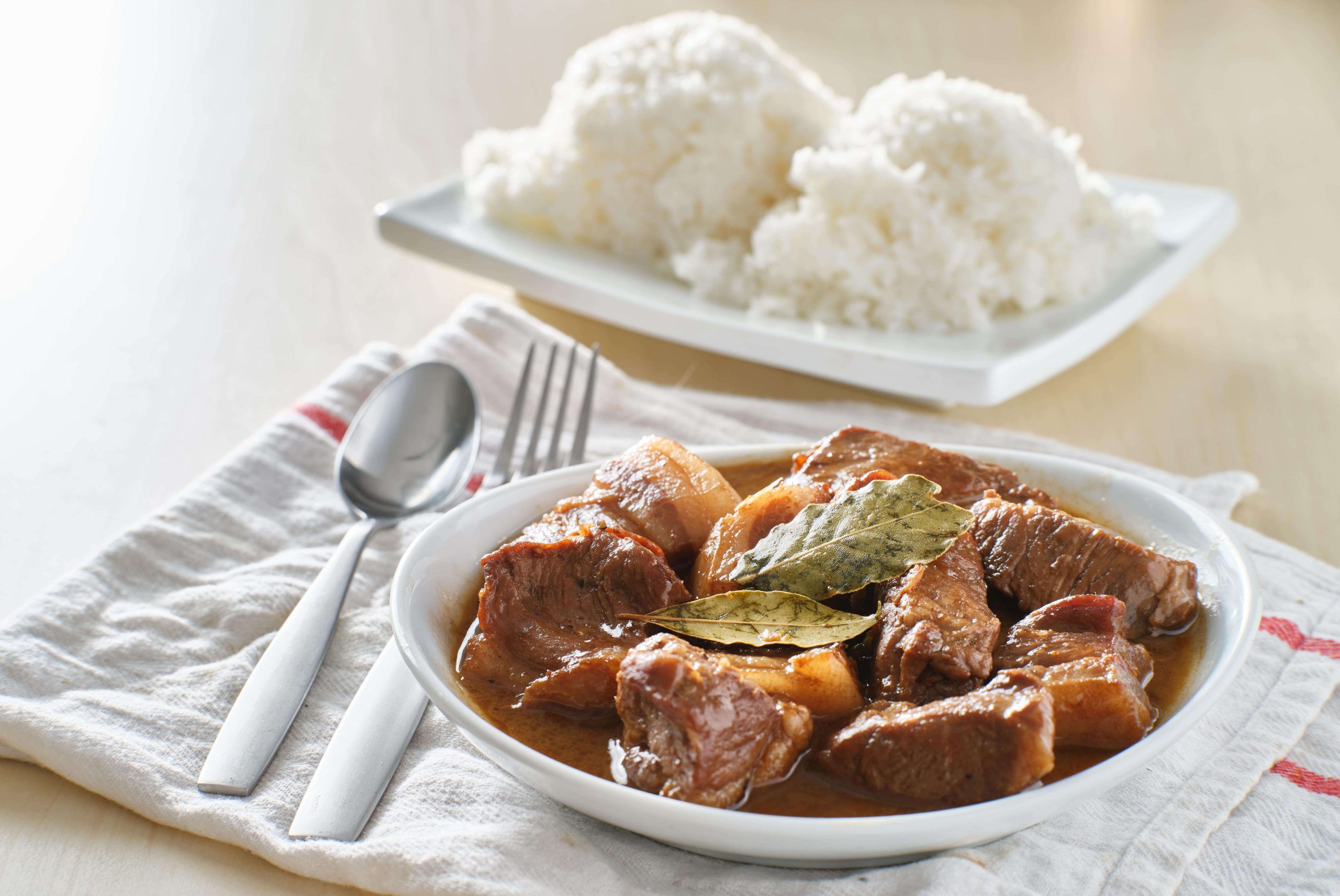The beauty of living in a country of more than 7000 islands like the Philippines is how a common tradition can have so many expressions. Because of how far and wide these 7000 islands span, it seems like each island was able to develop its own rich culture, from varying dialects to styles of clothing to their own cooking method, and yet they are still connected by common threads.
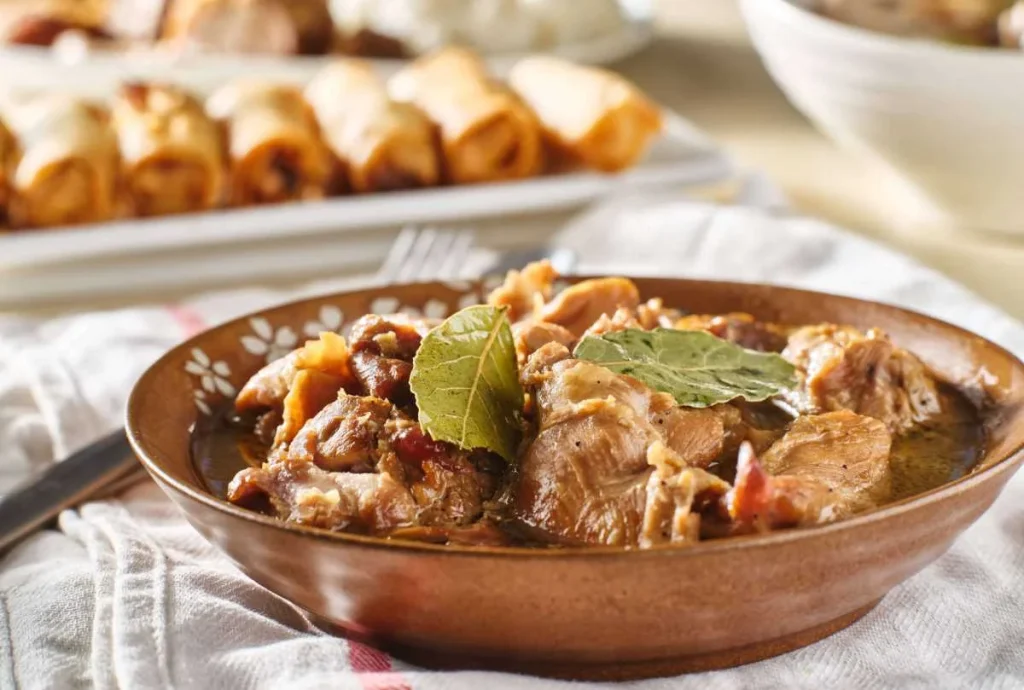
If you are asked by anyone who has not yet tried Filipino food about what dish they should try first, the most likely response is usually Adobo. As the Philippines’ unofficial national dish, everyone knows what Filipino adobo is and can doze off into nostalgia thinking about their lola’s or their mom’s, or even their dad’s adobo being cooked in their house and lot for sale. The recipe that is most familiar is the Chicken and Pork Adobo with its classic brown sauce. Made with garlic, vinegar, soy sauce, and flavored with bay leaves and peppercorns. Even though the cooking process was (allegedly) taught to us by the Spanish, Filipinos have claimed the dish as their own. With that being said, everyone will tell you that their family adobo is the best and nothing you can do will convince them otherwise. Usually, that wouldn’t be a problem, except that the different cultures in the Philippines make different kinds of adobo. Which begs the question: which kind of adobo are you supposed to try?
Did you know we have over 100 variations of adobo? Here are some of the different ways that the different parts of the country prepare everyone’s favorite Filipino food. Try these out in your house and lot for sale!
5 of the numerous different adobo recipes of the Philippines:
1. Adobong Puti
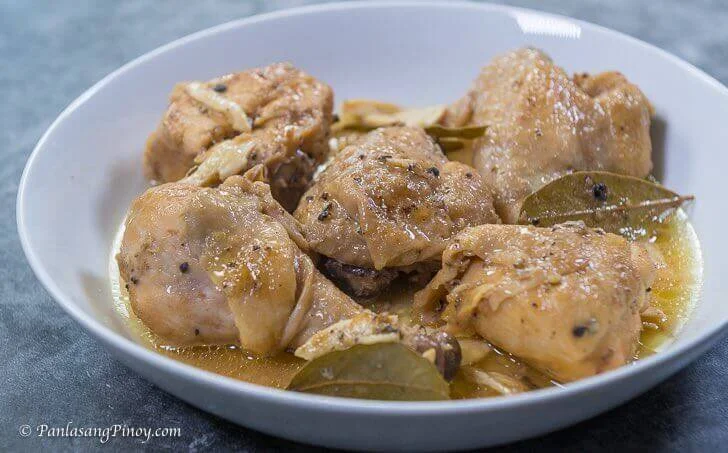
Photo from panlasangpinoy.com
Ingredients:
3 lbs of your favorite chicken pieces (drumsticks and thighs are a good combination)
6 cloves garlic, crushed
3 bay leaves
1 cup white vinegar
2 cups water
1 tsp salt
½ tsp freshly ground pepper
1½ tbsp fish sauce (optional)
Pampanga offers the adobo variation that has a more transparent sauce, called Adobong Puti. The classic brown sauce is lost in this recipe because instead of flavoring the adobo with soy sauce, the Kapampangan cuisine goes for salt instead. Because of this, the sauce stays the color of the vinegar that is used.
2. Adobong Pina-uga
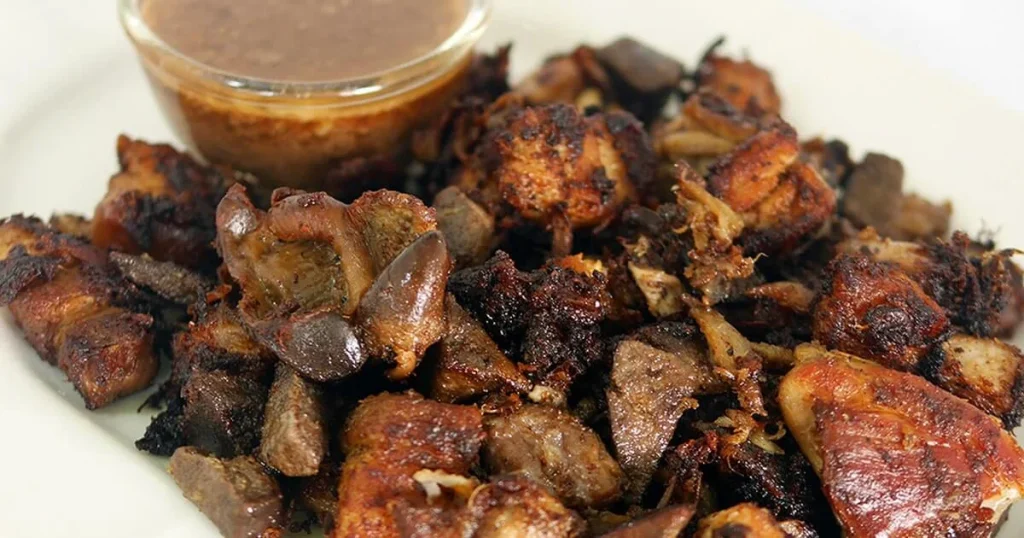
Photo from philstarlife.com
Ingredients:
1 kilo or 2 pounds pork with fat (I used pork belly)
1/2 cup water
1/3 cup vinegar (easy on apple cider vinegar if you are using it as it is very acidic, I used cane vinegar but any would do)
8 cloves garlic
1 laurel leaf
1 tsp pepper
1/2 tsp. turmeric (I used fresh turmeric)
salt to taste
Cebu’s adobo has the signature brown color, but not because of its sauce. Again, Cebuano adobo does not have any soy sauce, but it brings it one step further by not having any sauce at all! Adobong Pina-uga literally translates to “Dry Adobo”. The pork is first marinated in garlic, vinegar, bay leaf, and peppercorn sauce and cooked until all of the liquid has evaporated. They then proceed to allow the meat to brown and toast.
3. Adobo sa Atsuete
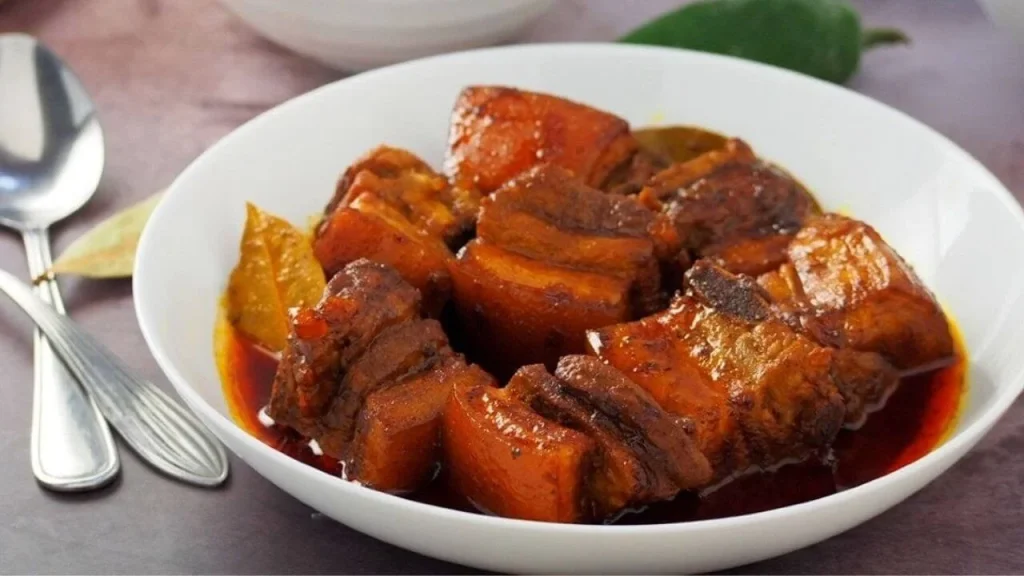
Photo from kawalingpinoy.com
Ingredients:
3/4 cup soy sauce
1/4 cup white vinegar
3 tablespoons brown sugar
2 tablespoons peppercorns, use whole peppercorns
1/8 cup garlic, chopped
2 bay leaf
400 grams pork, belly part (liempo), cut into 2-inch pieces
400 grams chicken, wings, legs, and thigh parts
1/4 cup achuete oil (annatto oil)
1/4 cup garlic, cloves
Salt
Pepper
Iloilo has one of the more unique recipes on this list because of the flavors that they add. Not only that, but the sauce of their adobo is orange! This is caused by the Atsuete powder or oil that they add to their sauce. To complement the nutty and peppery taste of the atsuete, they add ginger and lemongrass into the marinade.
4. Adobo sa Gata
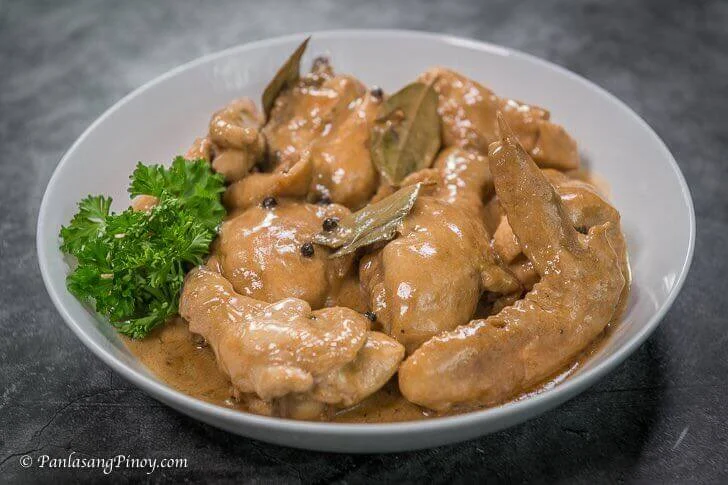
Photo from panlasangpinoy.com
Ingredients:
1 tablespoon cooking oil
5 garlic cloves, peeled and minced
1 bay leaf
1/4 teaspoon whole peppercorns
1/2 kilogram chicken leg quarters
1/8 cup soy sauce
1/4 cup white vinegar
1/2 cup water
1/2 cup coconut milk
1/2 cup water (as needed)
1-2 finger chilies (optional)
The Bicol region, famous for its Bicol express, adds these flavors into their adobo as well. They add coconut milk and chili into their sauce, making it very reminiscent of the region’s favorite.
5. Adobo sa Dilaw
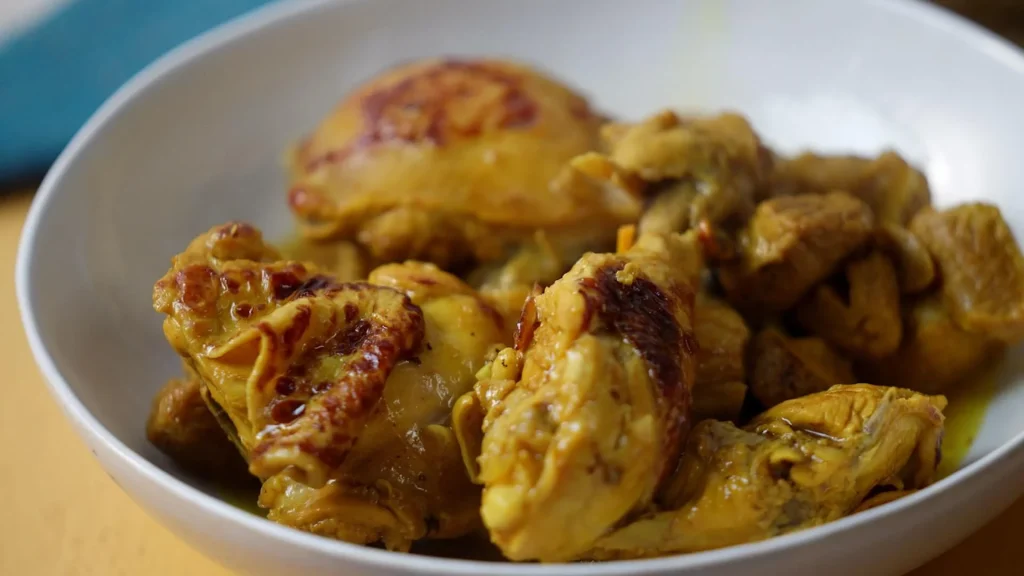
Photo from tastemade.com
Ingredients:
2 lbs. pork sliced
1/2 cup white vinegar
1 small yellow onion minced
1 knob turmeric sliced
6 cloves garlic crushed
4 dried bay leaves
1 piece pork or beef cube or 2 teaspoons beef powder
1/2 teaspoon granulated white sugar
1 cup water
2 teaspoons peppercorn
3 tablespoons cooking oil
Adobo sa Dilaw is a dish that is believed to originate from Southern Luzon, particularly in Cavite and Batangas. This dish incorporated turmeric instead of soy sauce. The procedure of making this dish is almost the same as making your classic adobo but with turmeric. You can add pork cubes to make up for the flavor that the soy sauce leaves out.

Food recipes can also be seen as a family heirloom. Each family takes its own unique spin on classic Filipino dishes and keeping the recipe intact after years would give the maker/eater to reminisce about previous memories. Especially if you’ve moved abroad and felt homesick, or even moved into a house and lot for sale in a different region, a classic Filipino Chicken Adobo recipe from your family could help in doing so. Add garlic fried rice to the oh-so-delicious adobo sauce and you’ll feel like you’re back in the Philippines.
These recipes do not even cover half of the variations of adobo in the Philippines. It would probably take years for you to go to every single location to try each recipe. But food is a wonderful way to connect with and explore the different cultures in the country. So let your taste buds go on an exciting food trip through the different styles of adobo. Try recreating these dishes in your house and lot for sale and taste the best of what the Philippines has to offer!
Related Blog: One-Pot Recipes for Stress-Free Cooking


